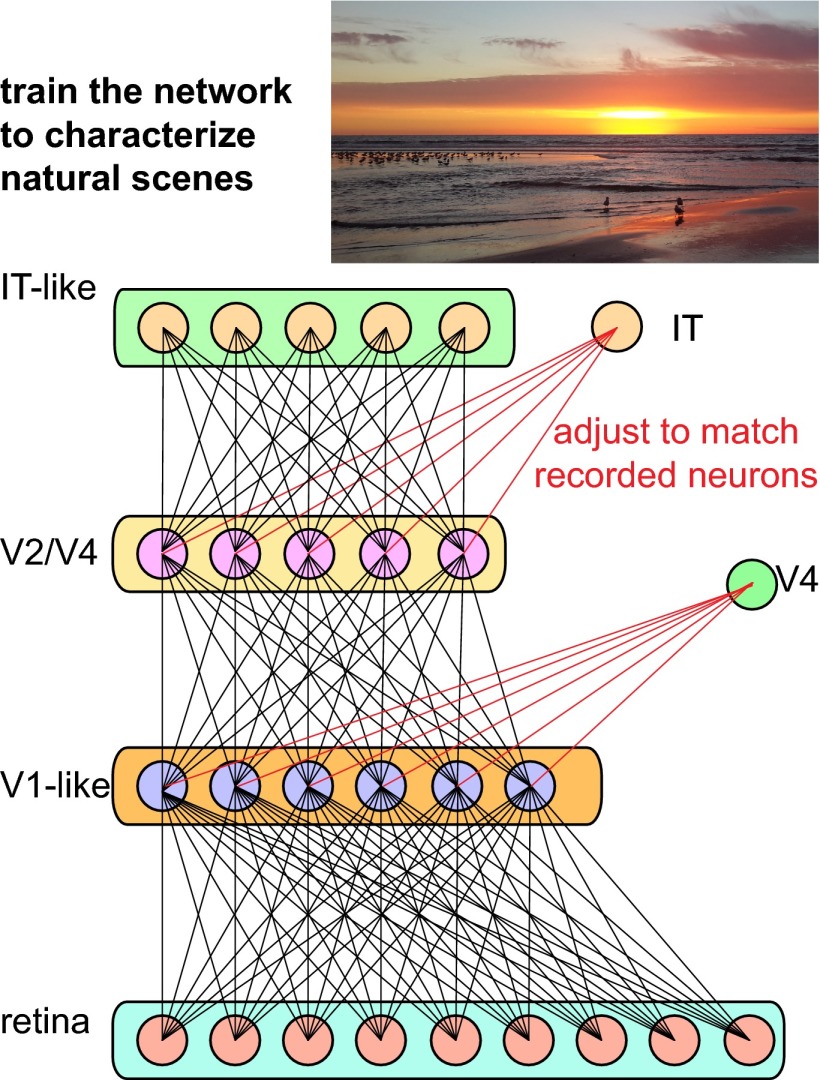Fig. 1.
Sensory processing in the brain relies on a series of nonlinear transformations coupled with pooling of signals from previous stages (13, 15). The connections (black lines) within such networks were optimized to characterize natural scenes and objects present in them (4). The optimized networks matched human performance over a wide range of object recognition tasks (4). These networks also proved useful in accounting for neural responses at different stages of processing in the primate visual system. A weighted pooling of signals (red lines represent connections optimized for a particular recording) from second or third tier of optimized networks accounted for the largest fraction of response variance among neurons in the intermediate area V4 within the ventral visual stream where object recognition is thought to take place (4). A weighted pooling of signals from the top layer of the model accounted for a large percentage of variance in the responses of neurons in the inferotemporal (IT) cortex, the final stage of ventral visual stream in primates.

